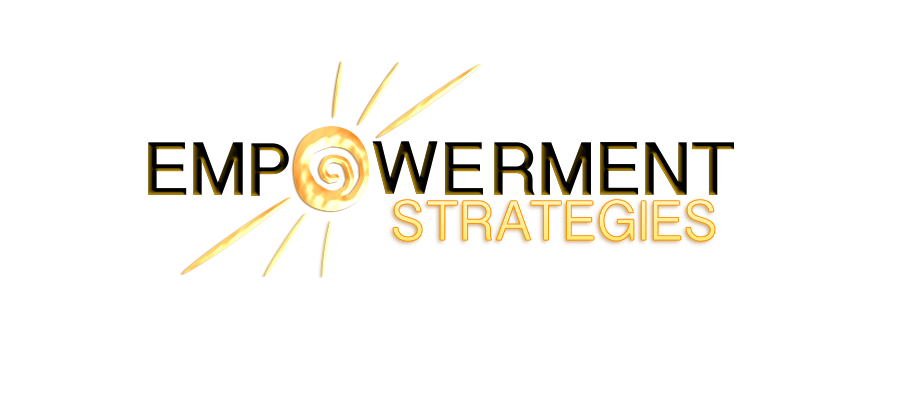
So Much Happier Blog
Dealing with Failure
“Do the one thing you think you cannot do. Fail at it. Try again. Do better the second time. The only people who never tumble are those who never mount the high wire. This is your moment. Own it.”
One of the things we all spend a lot of time thinking and worrying about is, “Am I good enough?” This is completely normal, but it’s also one of the main producers of angst built into the human condition. The other great worry is, “Do I (and will I) have enough?” Years ago I heard a lecturer mention these two questions as those to which all mental and emotional pain will reduce. In my work and my wanderings, I have found this to be true. Both questions are absolutely pivotal to the experiences we have and want to have in life, and they are perennial. At no point will we be able to escape these two questions, no matter how good life gets. And one of the concepts that gets right to the heart of that first question is the concept of failure. What is it, how do we define it, and most importantly, how can we avoid it? Please God, let us avoid it.
Instead of learning how to deal most constructively with these worries as we grow and mature, we often find that our greatest influencers, our friends and family members, pile onto them with their own baggage—much of which was inherited from others in their lives. A vast amount of information about (not) being enough and having enough collects in our subconscious minds, and becomes the compass for our life decisions without our even realizing the problem. Which is that others have defined our sense of self and our ideas about our potential, sometimes so thoroughly that we will fight for this vision of ourselves and the world as absolute reality.
Unfortunately, because of their own beliefs about themselves and the world, parents often drill into us that it isn’t safe to fail, and that failure can be one of life’s greatest horrors. Now in some situations, this makes complete sense. Consequences are all about context, and if you live in a time and place where there really is intense scarcity to grapple with on a daily basis, and just surviving requires balancing on a razor’s edge, then this actually makes a lot of sense. We learn about what’s acceptable and good in any given culture through both observation and direct teaching from those around us, and survival requires our absorbing the rules of play. And by the way, much of human history really has been marked by the experience of struggles for survival in a harsh world. However, not all of us are actually having this experience today. If we’re not, the wisdom of behaving as though we are becomes truly questionable. But how do we undo the deep programming we’ve absorbed throughout our lives that can keep us locked into endless, circular existential worry about being enough and having enough?
I guess this week I’ve decided to go for the big questions that underlie the entire personal development sphere! And while I can’t solve all problems in a short blog, I can give you the main branches that I think can define a successful path forward, keeping in mind that these are highly reductionist. In other words, just because the broad outlines can be stated quickly doesn’t mean they are simple and can be done quickly!
The first branch is giving yourself permission. There may be many aspects to getting to this willingness in all the areas of your life, but ultimately, you are the only one who can decide that you should be free to live a happy life that expresses who you truly feel yourself to be.
The second is extending yourself the love and respect that all humans deserve, the acknowledgment that we are all potentially good and perfect at some level, whether you call that soul or inspiration or genius. If you see yourself this way, you have what you need to invest in your joy, your learning, your constant betterment in the ways that you yourself define. In this distraction-clogged world, clarity can’t solve everything, but it’s a fantastic start and a powerful compass as we make our daily decisions.
As you contemplate giving yourself permission, here are a few things to contemplate:
Your parents probably did the best they could with what they had, including their natural abilities and their own built-in baggage, even if the best they managed was pretty terrible
Parents, if conscious and sober, constantly bounce back and forth between their hopes and their worries for you. This can make them seem pretty nuts when you’re small! They want you to be enough and have enough, but they worry that if you stand out too much, your life may be much harder
They themselves were probably taught that most of us don’t have the luxury of failing, because if we do, it will be the end. We’ll be finished, we and our families will die, and all will be lost. Even if they wouldn’t phrase it this starkly, I promise you that these beliefs are in there
Everyone is carrying around So. Much. Baggage. From what has been passed down unconsciously for countless generations throughout human history. I wouldn’t have believed how much until I started Tapping and finding it all starting to stand out to me in startling detail
If they had had better teaching, encouragement, and better opportunities, their lives could have been wholly different. Do you think humans deserve these things? Might you?
So few people have had the luxury of time and enough opportunity to do the inner work necessary to consciously differentiate between what is truly them, and what is the muddiness passed down to them by others. But because of recent centuries of technological innovations, you may be better able to carve this out if you choose
Only you can choose to stand for the best of humanity and do the necessary work to wash off the past and everything that isn’t really yours.
If you decide to give yourself permission in this way, know that this is not something you will do only once. It will need to be a daily decision you make as your life continues to evolve and change. This might seem like a burden, but the sooner you come to accept it, the more you can build this pivotal habit.
Here are some thoughts to get you moving in positive directions as you begin to live a life in which you take your knowledge of who you really are and want to be and put it into action:
If you do assume that you are good and worthy of your own investment, what would you need in order to get beyond the limitations you’ve absorbed from people and from life events? While not everything can be planned in a linear fashion, some analysis of what you need is crucial to finding resources
Specifically, what holds you back from the things you secretly desire?
Where can you find information and other help that would move you through and beyond these impediments? What work will you need to do on the inside?
You may need to address the aftermath of difficult experiences in your life that have shaped your concept of self. Are you willing?
How might you rethink your concept of failure for the modern world and your own endeavors? Is there good that can come out of failure? Seek out autobiographical information about people you admire and find out how they failed before or after they succeeded, and how that changed them. How do others handle failures in ways that become constructive?
How do you personally define failure? Is a mistake failure? Or is failure only a word for something whose value we have not yet been able to see?
Be willing to ask yourself again every day what you need and stay flexible as new answers arise.
Failure can remain one of our greatest fears, or it can become a natural feature of life on Earth that may never be pleasant, but can become a powerful force for our learning and progress, as well as that of others with whom we communicate our experiences. Unfortunately, in order to see it this way, we will need to go up against a massive amount of programming and the constant opinions of others. It can be done, though, and it has the potential to yield untold dividends in freeing you from harmful and unnecessary limitations.


